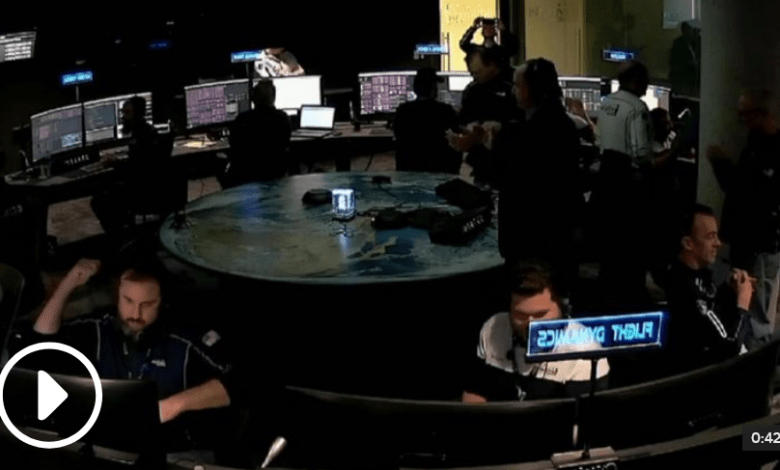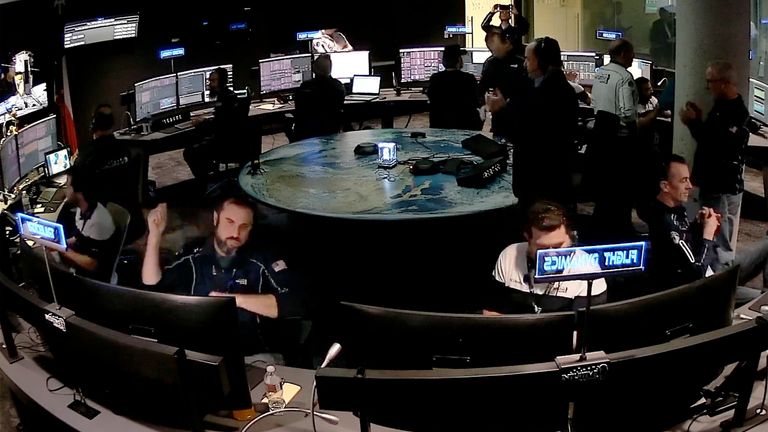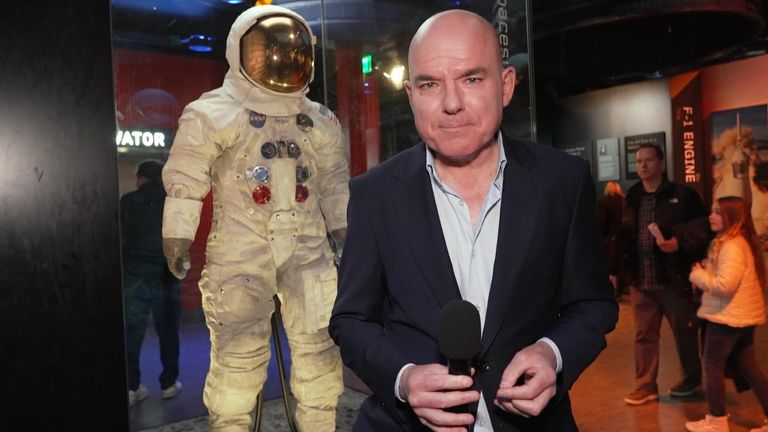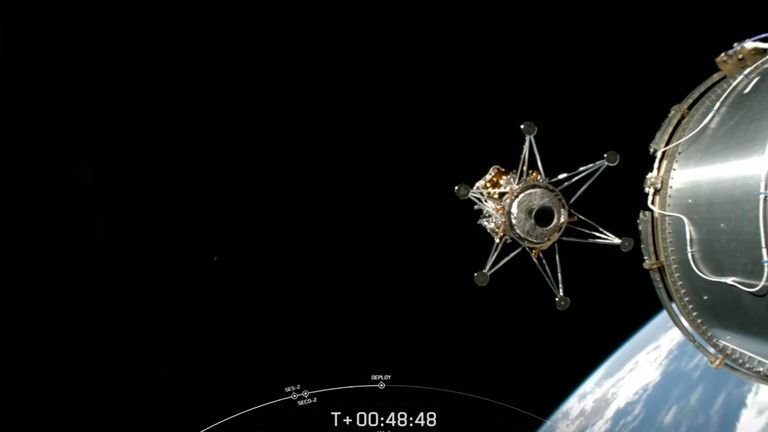Moon landing: US lander successfully touches down in ‘giant leap forward for all of humanity’

The Odysseus lander has successfully touched down after a “nail-biting” descent saw the first ever privately owned craft reach the moon’s surface.
The Intuitive Machines’ lander is also the first US lander to successfully reach the moon in more than 50 years – since the last of NASA’s Apollo programme in 1972.
There was applause and cheers in the Houston control room as landing success was confirmed after a few tense minutes.
“I know this was a nail-biter, but we are on the surface, and we are transmitting,” Intuitive Machines CEO Steve Altemus said.
“Welcome to the moon.”


The 14-ft tall, six-footed carbon fibre and titanium lander descended from a moon-skimming orbit and guided itself to the surface, searching for a relatively flat spot among the cliffs and craters to make its landing near the south pole.
Back on Earth, the team had to wait well past the expected touchdown time for confirmation that there was a signal before celebrating. 
Odysseus was launched aboard a SpaceX Falcon 9 rocket from Cape Canaveral, Florida, last week.
The last time a US craft made a similar descent was in 1972, when Apollo 17’s Gene Cernan and Harrison Schmitt were aboard, and the pair remain the last humans to have walked on the moon.

NASA administrator Bill Nelson called the mission a “triumph” and a “giant leap forward for all of humanity”.
In a televised statement following the successful landing, he said: “Today for the first time in more than half a century the US has returned to the moon.
“For the first time in the history of humanity, an American company launched and led the voyage up there.
“Today is a day that shows the power and promise of NASA’s commercial partnerships.
“Congratulations to everyone involved in this great and daring quest at Intuitive Machines, SpaceX and right here at NASA.
“What a triumph – Odysseus has taken the moon. This feat is a giant leap forward for all of humanity. Stay tuned.”

NASA is the mission’s main sponsor, paying $118m (£93.5m) to put its experiments on board as part of a programme which could eventually see astronauts return to the moon later in the decade.
The space agency has ambitions to make lunar trips a more regular affair and, eventually, build a base on the moon.
Odysseus is also carrying six other payloads from commercial companies.
It has landed closer to the moon’s south pole than any other craft.
The region has many more craters, cliffs and boulders than the equator, where the Apollo landings were in the 60s and 70s.
Scientists hope to find layers of ice, or perhaps Arctic-style permafrost, from which they can create hydration for astronauts – something which would enable them to stay for prolonged missions.
Intuitive Machines’ entry is the latest in a series of landing attempts by countries and private outfits looking to explore the moon and, if possible, capitalise on it.
Japan made a landing last month, joining the US, Russia, China and India in the club of countries to have visited the surface.
Source: news.sky.com






